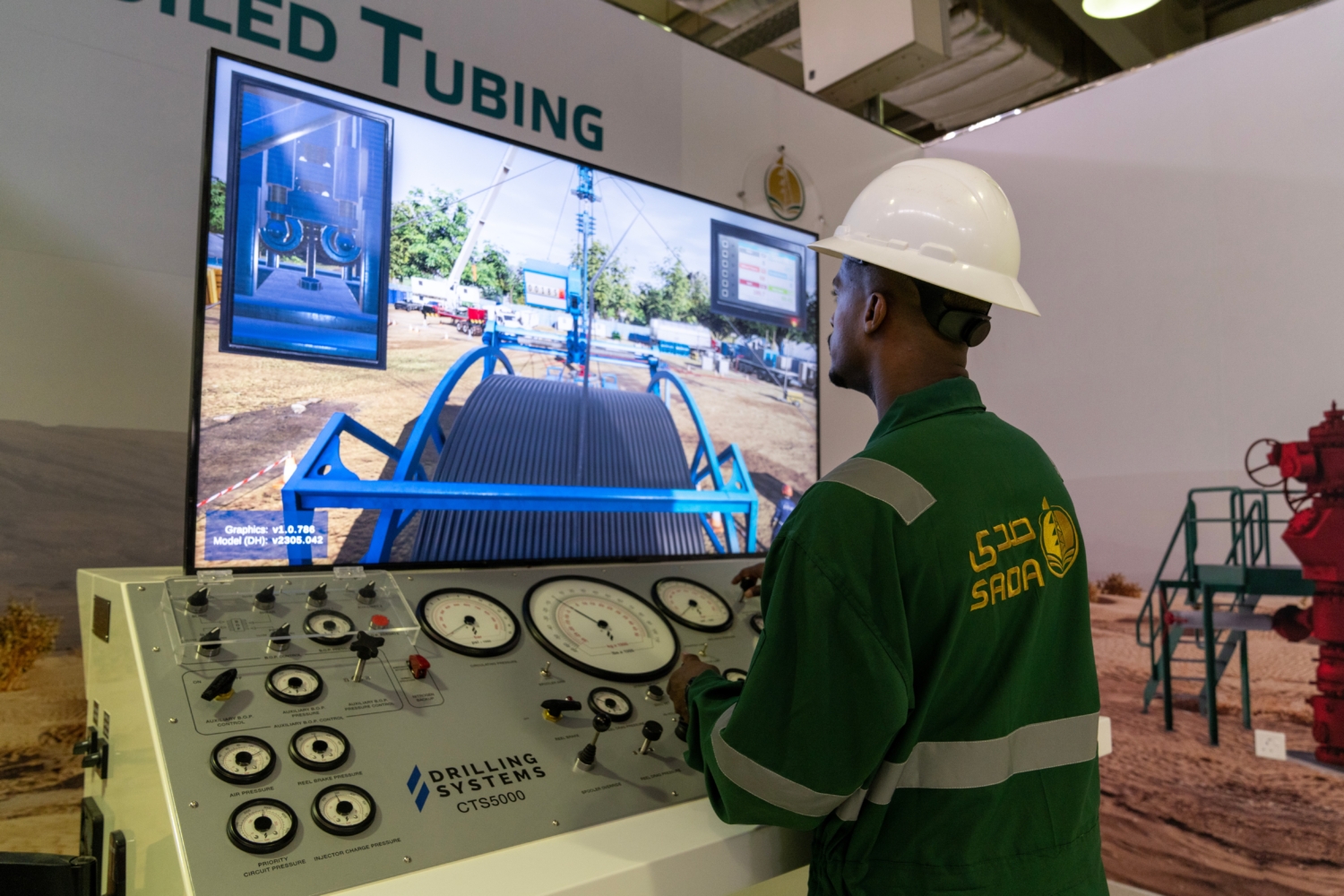Introduction
The Saudi Arabian Drilling Academy (SADA) is an innovative venture formed through collaboration between Aramco and over 25 major drilling contractors and service providers. Its singular mission is to cultivate local talent for the Energy Sector, particularly in Oil & Gas. This extraordinary partnership, which unites competitors and draws from a vast knowledge base, empowers SADA to equip its trainees with the knowledge and skills essential for a thriving career in this dynamic industry.
The Challenge
SADA’s mission of cultivating homegrown talent for the demanding Oil & Gas sector posed a formidable challenge. Traditional training methods often fell short in providing the real-world experience needed to excel in this high-stakes industry. Furthermore, the constant use of rigs for training purposes raised safety concerns and increased operational risks.
The Solution
SADA recognised that to address these challenges effectively, they needed a cutting-edge training solution. They turned to 3t Drilling Systems for a comprehensive answer. 3t Drilling System’s contribution to SADA’s offerings primarily involved a range of advanced simulators, including the DS:5000 + Cyber, CTS:5000, MultiSIMs, and the DS:20. Recent additions, the Wireline:5000 and DS:600Lite, further augmented the training arsenal.
This diverse selection of simulators empowered SADA to cater to the needs of drilling contractors and service providers alike. It positioned SADA uniquely in the market by offering the most advanced training simulation technologies available.
Head of Job-skills Training at SADA, Eyhab Salah, emphasised the positive impact of these advanced simulators. He explained, “We now have more resources and can offer more variety for the trainees with a high-quality product.” Eyhab also noted that “Instead of utilising the rig for constant training purposes, SADA now uses the simulators to reduce the load on their actual rig, so the safety is higher, and risk is less.”
The Result
The integration of 3t Drilling System’s technologies into SADA’s training curriculum brought about transformative changes. Trainees benefited from a more comprehensive and safer learning experience. The simulators provided them with a realistic drilling environment, enabling them to develop competencies without being physically present at the site. This not only ensured a safer working environment but also facilitated hands-on practice in HSE scenarios, further enhancing their skills.
Beyond simulators, SADA contracted 3t for additional technological enhancements. Virtual Reality (VR) solutions introduced a new dimension to training, allowing students, many of whom were newcomers to the industry, to immerse themselves in the drilling environment without being on-site. This not only ensured a safe learning environment but also enabled them to practice and build competencies effectively.
The implementation of a Training Management Solution (TMS) system provided SADA with a high-level tracking, organisation, and managed solution for resources. This streamlined management ensured that training resources were optimally allocated and utilised, enhancing the overall training efficiency.
Faisal Al- Daihani, Managing Director at SADA commented “At SADA, we want to deliver safe, fast, and more effective hands-on training. Our main goal is to ensure that our trainees can learn and practice in a safe environment. Technology is a tool that can improve training in many ways. Instructors and trainees all benefit from these types of resources, customized learning materials, and opportunities for advanced learning. Vocational collages and companies can adopt new technology knowing that they’re making a sound investment in the future of their workforce. After all, technology is a powerful asset in any training centre.”
In summary, the collaboration between SADA and 3t resulted in a revolutionised approach to training for the Energy Sector. Through advanced simulators, VR solutions, and a robust TMS system, SADA not only elevated its training standards but also enhanced the safety, competency, and efficiency of its programs. This case study highlights how innovation and technology can drive excellence in training, making it a cornerstone for the success of the Energy Sector.
